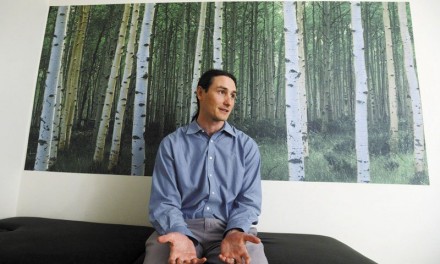Dale Gieringer of California NORML emailed the abstract of a study about to be published in Drug and Alcohol Dependency, “The dose effects of short-term dronabinol (oral THC) maintenance in daily cannabis users,” with a note that asked, “Who could be so obtuse as to propose that cannabis dependence be treated with Marinol megadoses —pot-addled government addiction researchers or pharmaceutical hucksters?”
Martin Lee responded, “Look at the bright side; at least they’re not blocking the receptor and triggering suicides.” (He was refering to Sanofi-Aventis’s withdrawn “cannabinoid-antagonist” drug, Rimonabant.)
I reminded my friends that Tod Mikuriya had been the single biggest prescriber of Marinol in Contra Costa County, and was annually honored at a dinner hosted by Solway’s regional sales manager. Unlike Jeff Hergenrather, MD, who says all his patients prefer the herb to pure THC, Tod said that some indicated a preference for or perfect contentment with Marinol. Like five to 10 percent, if memory serves. ASK JOHN AND BEVERLY. Maybe Tod’s patient base in the East Bay included more “straight” people —patients more comfortable medicating with a prescribable pill than a plant product product— than Hergenrather’s cohort in Sebastopol.
The study Gieringer forwarded had been conducted by a team from Johns Hopkins University School of Medicine. Lead author Ryan Vandrey has made a career of studying “cannabis dependency.” The following press release came from the Johns Hopkins Department of Psychiatry and Behavioral Sciences.
A side-by-side look at marijuana and nicotine withdrawal underscores the need to consider both in the clinic.
Dr. Ryan Vandrey
Myths about marijuana use are plentiful and hard to squelch: It’s an innocuous, friendly little drug; it isn’t addictive and is easy for any user to quit; there’s little interplay between it and other illicit drug use. Such ideas have likely been around as long as the drug itself, perhaps, in part, because hard research has been relatively scarce.
But in the past decade, a small cluster of scientists has made marijuana studies a specialty, describing use of the drug and the range of its effects and, more recently, pinning it down as an addictive substance with a genuine withdrawal syndrome. One of the group, Hopkins behavioral pharmacologist Ryan Vandrey, Ph.D., began marijuana research as a graduate student at the University of Vermont, home of some early definitive work. As the evidence mounts, he and colleagues are hoping to change perceptions of marijuana as harmless for everyone. “Recent research suggests as many as one in 10 who try the drug develop problems tied either to its use or to quitting it,” he says. “We need better ways to treat those seeking help.”
Vandrey’s latest work, reported in the January issue of Drug and Alcohol Dependence, aims to extend his earlier research on marijuana withdrawal by comparing it to that of a drug already well understood in the lab and by the man in the street—nicotine. “Ultimately, we hope to clarify withdrawal’s role in the subset of teen and adult users who find abstinence so difficult,” says Vandrey. “If it turns out to be clinically important—as our results suggest—we’ll have a therapeutic target.”
Marijuana withdrawal is marked by increased anger and aggression, anxiety, depressed mood, irritability, restlessness, insomnia, strange dreams and decreased appetite. Less commonly, there are headaches, physical tension, sweating, stomach pain and general malaise. “The typical effects are probably the ones most related to relapse in patients,” says Vandrey. They’re common, he adds, to all drugs of abuse.
In the new study, Vandrey and colleagues recruited heavy users of tobacco and marijuana. Each followed a schedule that involved usual use alternating with periods of “cold turkey” abstinence from either drug as well as both at the same time. All filled out daily surveys of marijuana withdrawal and nicotine withdrawal. “Our earlier studies on withdrawal in marijuana smokers and withdrawal in tobacco smokers showed that what they go through is fairly similar,” says Vandrey.
Because comparing different people introduces an element of apples versus oranges, however, the new study’s look at same-person withdrawals of both substances is stronger scientifically. It also sheds light on simultaneous withdrawal—the first such study of its kind. “This is important,” Vandrey says, “because roughly half of heavy marijuana users are also tobacco addicted. And among heavy smokers, about 9 percent have a daily marijuana habit.”
In the end, withdrawal appeared similar in intensity and quality from all the angles in the study. Data from quitting both marijuana and nicotine reflect an odd turn, though: Half of participants reported it was easier to quit both substances at once; the others found it harder. While that needs looking into, Vandrey says, it at least suggests drug treatment programs should address clients’ simultaneous tobacco use, something rarely done today.
Pharmaceutical companies fund addiction researchers to “prove” the efficacy of the drug they intend to market as a “treatment” for a given condition. University labs get a piece of the action. The Treatment Racket (TR) is often overlooked when we consider who profits from marijuana prohibition. It fills an important niche between the “Justice System” and “Healthcare.”





